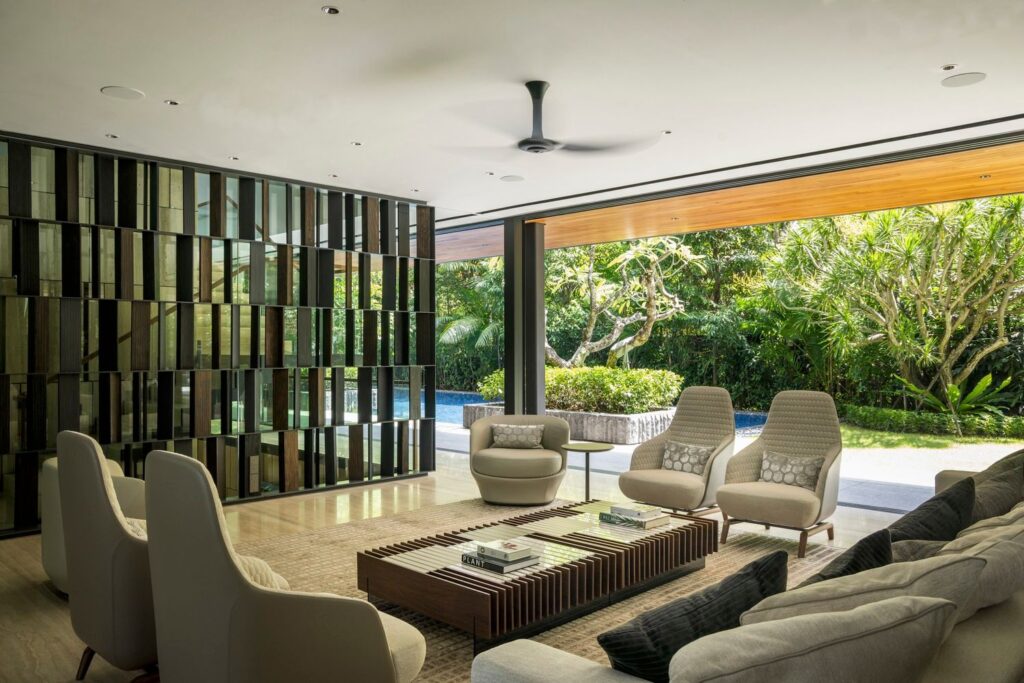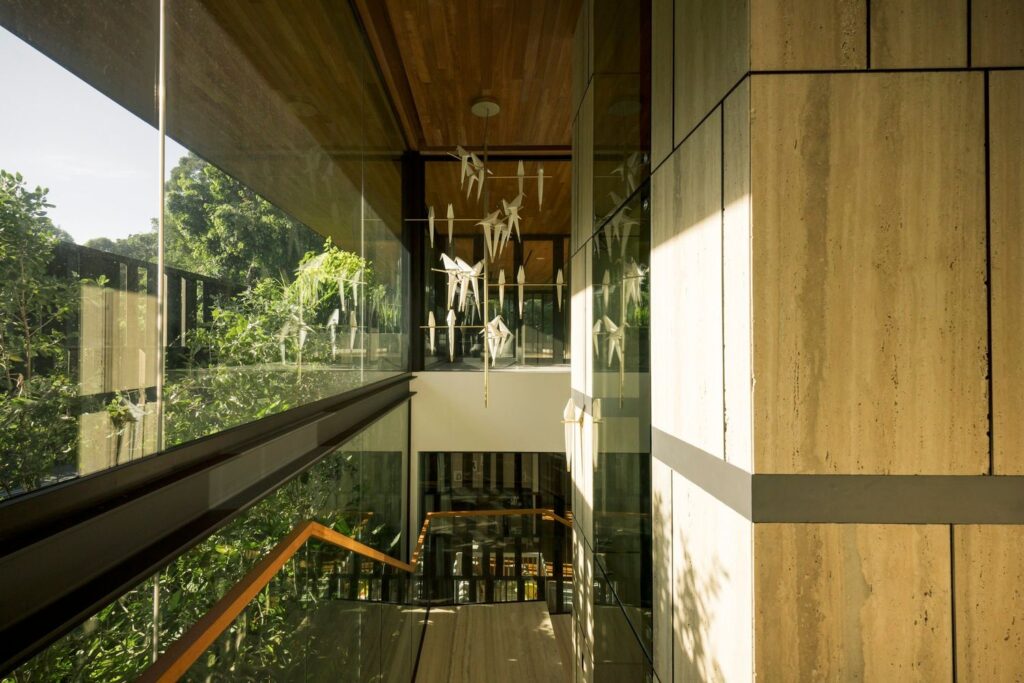Touching Eden House is more than just a home. It’s a dream come true—a blend of nature and human genius. We sat down with the architects at Wallflower Architecture + Design to find out the secret behind this amazing project.
Wallflower Architecture + Design describes Touching Eden House as a “haven of wonder”. It’s clear that this retreat is the result of a team effort. The architects emphasize the importance of having a visionary client who shares their passion for excellence.
“It’s rare to have such a complete team for a single-family home,” they explain. “From landscape architects to lighting consultants to interior designers, everyone brought their unique expertise to the table. This level of collaboration is usually reserved for much larger projects.”
The result is a home that feels like a carefully thought-out experience. From the OTIIMA sliding doors that connect indoor and outdoor living to the Gaggenau appliances and Giorgetti furniture that make up the interior, each element adds to the overall feeling of luxury and sophistication.

© Finbarr Fallon
Light plays a key role in the design of Touching Eden House. The architects explain how they harnessed the sun’s power to create a serene and stimulating space.
“In the tropics, light changes dramatically throughout the day,” they say. “We wanted to capture this sense of movement and transformation in the house. By carefully considering the placement of windows and shading, we created a space that feels connected to nature while offering respite from the intense sunlight.”
The use of biophilic design, which incorporates natural elements such as plants into the architecture, further enhances the sense of calm. It’s a space where you can truly escape the hustle and bustle of urban life.

© Finbarr Fallon
The Eden House shows that people can live harmoniously with nature even in busy cities. The architects think modern life often isolates us from the natural world, but there’s a growing desire to connect.
“Biophilic design is a key strategy for bringing nature indoors,” they explain. “By incorporating natural materials, plants, and even water features, we can create spaces that promote well-being and reduce stress”.
When asked about the future of architecture, architects are optimistic. They believe technology will be important in creating a more sustainable and equitable world.
“We must use technology to address challenges such as climate change and inequality,” they say. “We can build buildings that benefit the planet and its inhabitants by inventing fresh materials, building techniques, and energy-saving devices.”
The architects want a future where architecture and nature are inseparable. Buildings will be designed to work with the natural environment instead of against it. This vision is inspiring and achievable.
